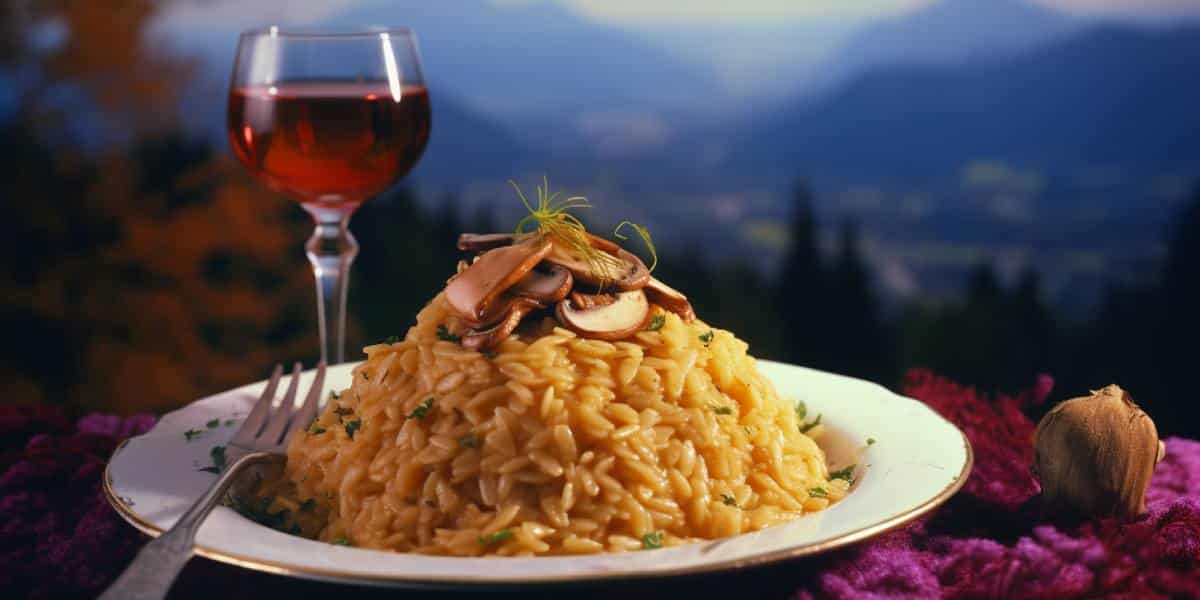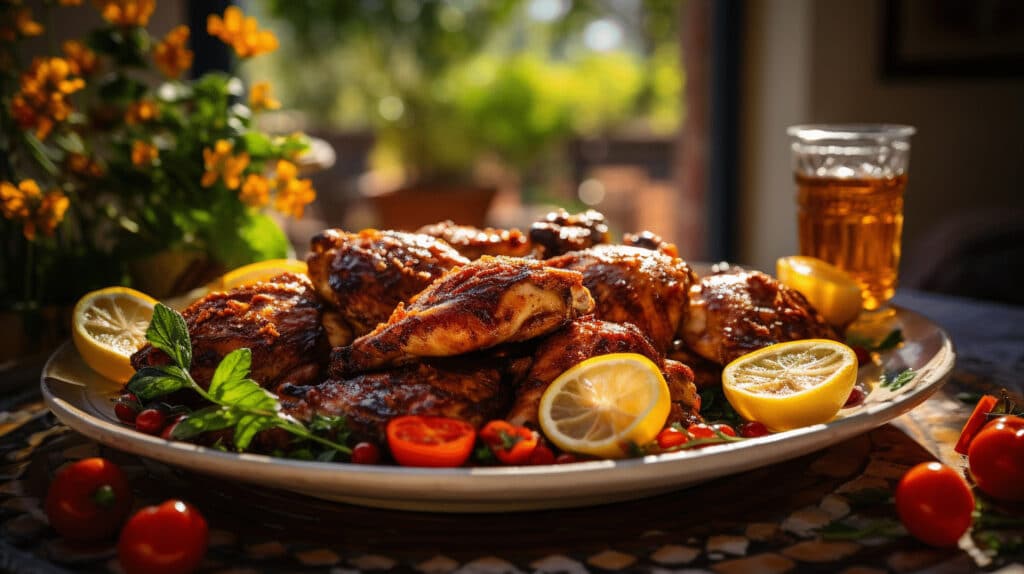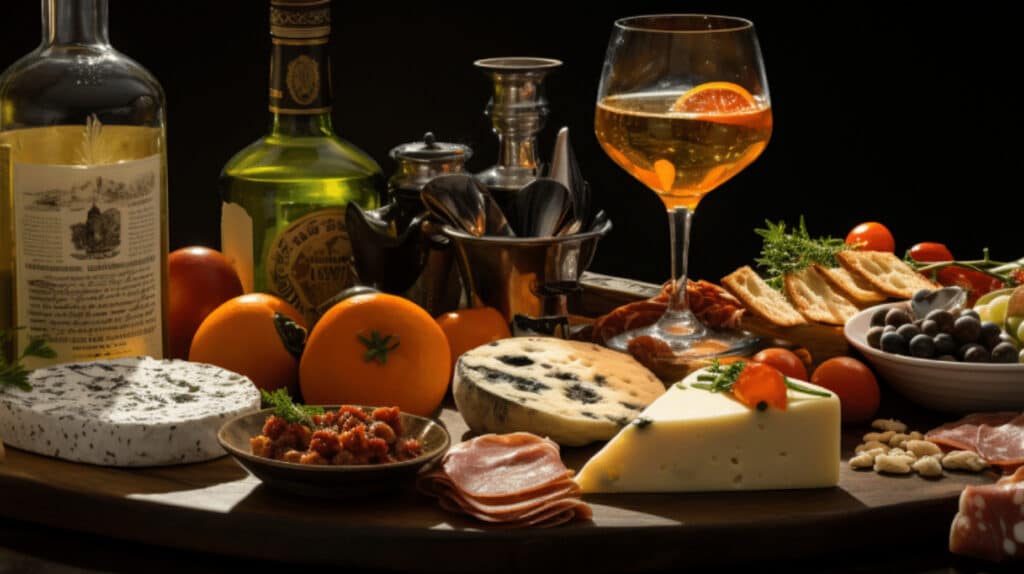Vermouth, a fortified wine infused with botanicals, has long been a staple in the world of mixology. However, its culinary potential is often overlooked. This article aims to shed light on the versatility of vermouth wine for cooking, from substituting it for wine in recipes to using it as a base for sauces and marinades. With a longer shelf life and a rich array of flavours, vermouth can be a game-changer in your kitchen.
What Are Some Common Misconceptions About Cooking with Vermouth Instead of Wine?
When it comes to cooking with vermouth, several misconceptions often deter people from exploring this versatile ingredient. Let’s debunk some of these myths to better understand the value that vermouth can bring to your culinary endeavours.
Only Good for Cocktails
One of the most prevalent misconceptions is that vermouth is solely a cocktail ingredient, particularly for classics like Martinis or Negronis. While it’s true that vermouth shines in mixology, its utility extends far beyond the bar and into the kitchen.
Too Strong or Overpowering
Another common myth is that vermouth’s flavour is too strong or overpowering for cooking. In reality, the complexity of vermouth can enhance a dish, adding layers of flavour that wine might not provide. The key is to use it judiciously, just as you would with any other potent ingredient like spices or herbs.

Limited Usability
Some people believe that vermouth can only replace white wine in recipes, limiting its usability. However, vermouth comes in both dry and sweet varieties, making it a versatile substitute for both white and red wines. It can be used in everything from sauces and stews to desserts.
Wasteful for Occasional Cooking
The notion that vermouth is wasteful for those who cook infrequently is another misconception. Contrary to this belief, vermouth’s longer shelf life compared to wine makes it an economical choice for occasional cooks. You can keep an opened bottle for several months without worrying about spoilage.
Not Suitable for Desserts
The idea that vermouth is not suitable for desserts is unfounded. Sweet vermouth can be a delightful addition to desserts like poached fruits or even certain types of cakes, offering a unique twist to traditional recipes.
By dispelling these misconceptions, you’ll be better equipped to harness the full potential of vermouth in your cooking, elevating your dishes in both flavour and complexity.
Why Choose Vermouth Wine for Cooking Over Wine?
The question of why one should opt for vermouth over wine in cooking is a pertinent one, especially given that wine is often the go-to choice for many recipes. However, vermouth offers a range of advantages that can elevate your culinary creations to new heights.
Longer Shelf Life
One of the most compelling reasons to choose vermouth is its longer shelf life compared to regular wine. Due to its higher alcohol content and the addition of botanicals, vermouth can last for several months once opened, whereas wine tends to deteriorate within a week. This makes vermouth a more economical and practical choice for those who don’t cook with alcohol frequently.
Complexity of Flavour
Vermouth is not just wine; it’s wine that has been fortified and infused with a variety of herbs, spices, and botanicals. This complex flavour profile can add depth and nuance to your dishes, from sauces to stews and beyond. Whether you’re making a creamy mushroom risotto or a hearty beef bourguignon, a splash of vermouth can provide an extra layer of flavour that wine alone may not offer.
Versatility
The versatility of vermouth is another point in its favour. Available in both dry and sweet varieties, it can be used in a wide range of dishes. Dry vermouth works exceptionally well in savoury recipes, while sweet vermouth can add a touch of complexity to desserts and sweet sauces.

Culinary Innovation
For those looking to experiment and innovate in the kitchen, vermouth offers a playground of possibilities. Its unique characteristics can inspire you to try new recipes and techniques, pushing the boundaries of your culinary skills.
By understanding these advantages, you’ll find that vermouth is not just an alternative to wine but often a superior choice for cooking, offering both practical benefits and a richness of flavour that can take your dishes to the next level.
How Can You Determine the Right Type of Vermouth for Different Recipes?
Choosing the right type of vermouth for your recipe can make a significant difference in the final flavour profile of your dish. Here are some guidelines to help you make an informed decision. And don’t forget that even Escoffier states that vermouth is a great ingredient for cooking.
Understand the Vermouth Types
Firstly, it’s essential to understand the basic types of vermouth available. Dry vermouth is typically clear and has a crisp, herbal flavour, making it suitable for savoury dishes. Sweet vermouth, on the other hand, is darker and has a richer, sweeter profile, which works well in desserts and certain sauces.
Consider the Dish’s Flavour Profile
The next step is to consider the overall flavour profile of the dish you’re preparing. If your recipe calls for a light, delicate flavour, a dry vermouth might be the best choice. For richer, more robust dishes, a sweet or even a red vermouth could provide the depth you’re looking for.
Experiment with Small Quantities
If you’re unsure, consider doing a small test by adding a little vermouth to a portion of your dish. Taste it and adjust accordingly. This experimental approach can help you fine-tune the amount and type of vermouth to use.
Check Recipe Recommendations
Many modern recipes that incorporate vermouth will specify the type that works best for that particular dish. If such recommendations are available, they can serve as a useful starting point.
Pair with Ingredients
Consider the other ingredients in your recipe. For instance, dry vermouth pairs excellently with seafood, chicken, and vegetables, while sweet vermouth can complement dishes that include red meats or fruit.
Be Open to Blending
In some cases, blending different types of vermouth can yield a unique and complex flavour. This technique is especially useful in sauces and stews, where a balance of sweetness and herbal notes may be desired.
By following these guidelines, you’ll be better equipped to choose the right type of vermouth for your culinary creations, ensuring that each dish is as delicious as it can be.

Popular Dishes that Benefit from Vermouth
Risottos
Seafood Dishes
Beef Stews
Chicken Masala
Traditionally made with Masala wine, this dish can take on a new dimension when prepared with sweet vermouth. The sweetness of the vermouth complements the earthiness of the mushrooms and the savouriness of the chicken.
Poached Fruits
Sweet vermouth can be a delightful addition to desserts like poached pears or apples. Its complex flavour profile adds a unique twist, making the dessert more intriguing.
Salad Dressings
Believe it or not, a dash of dry vermouth can liven up your salad dressings. It adds a subtle herbal note that works well with olive oil and vinegar, making your greens more exciting.
Pasta Sauces
Whether it’s a tomato-based marinara or a creamy Alfredo, a splash of vermouth can elevate your pasta sauces. Dry vermouth can cut through the richness of creamy sauces, while sweet vermouth can add complexity to tomato-based ones.
Tips and Tricks for Cooking with Vermouth
Cooking with vermouth can be a rewarding experience, but knowing a few tips and tricks can help you maximise its potential in your culinary creations. Here are some guidelines to keep in mind:
Know Your Vermouth
Understanding the flavour profile of the vermouth you’re using is crucial. Dry vermouths are generally herbal and crisp, suitable for savoury dishes, while sweet vermouths are richer and work well in desserts and certain sauces.
Use Sparingly
Vermouth is potent, and a little goes a long way. Start with a small amount and taste as you go. You can always add more, but you can’t take it out once it’s in the dish.
Deglazing the Pan
Vermouth wine for cooking is excellent for deglazing pans after sautéing meat or vegetables. The alcohol helps lift the fond (the browned bits) from the pan, incorporating those flavours back into the dish.
Marinating Meats
Consider using vermouth in your marinades. The alcohol content can help tenderise the meat, while the botanicals add unique flavours. A mixture of vermouth, olive oil, and your choice of herbs can make for a compelling marinade.
Reducing Waste
If you have leftover vermouth, don’t let it go to waste. Use it to make vermouth ice cubes that you can later add to sauces or stews. This way, you have pre-measured portions ready to go.
Pair with Complementary Flavours
Think about the other ingredients in your dish. Ingredients like garlic, rosemary, and citrus often work well with the herbal notes in dry vermouth, while spices like cinnamon and cloves can complement the sweetness of red or sweet vermouth.
Experiment and Adapt
Don’t be afraid to experiment. If a recipe calls for wine, try substituting it with vermouth and note the differences. Adapt your recipes to suit the unique characteristics that vermouth brings to the table.
By keeping these tips in mind, you’ll be well on your way to mastering the art of cooking with vermouth, adding a new dimension of flavour to your dishes.
4 Perfect Recipes with Vermouth wine
Vermouth’s versatility makes it a fantastic ingredient in a variety of dishes. Here are four perfect recipes that showcase the unique flavours that vermouth can bring to your culinary creations.
1. Vermouth Risotto with Wild Mushrooms

Ingredients:
- 1 cup Arborio rice
- 1/2 cup dry vermouth
- 2 cups chicken or vegetable broth
- 200g wild mushrooms, sliced
- 1 small onion, finely chopped
- 2 tbsp olive oil
- Salt and pepper to taste
- Grated Parmesan for garnish
Method:
- Heat olive oil in a pan and sauté the onions until translucent.
- Add the mushrooms and cook until soft.
- Stir in the Arborio rice and cook for 2 minutes.
- Pour in the dry vermouth and let it reduce by half.
- Gradually add the broth, stirring constantly until the rice is cooked.
- Season with salt and pepper.
- Garnish with grated Parmesan before serving.
2. Vermouth-Poached Pears
Ingredients:
- 4 ripe pears, peeled
- 1 cup sweet vermouth
- 1/2 cup sugar
- 1 cinnamon stick
- 1-star anise
Method:
- Combine sweet vermouth, sugar, cinnamon stick, and star anise in a pot.
- Bring to a simmer and add the pears.
- Poach the pears until tender, about 20 minutes.
- Remove pears and reduce the liquid to make a syrup.
- Serve pears drizzled with the reduced syrup.
3. Vermouth-Marinated Grilled Chicken

Ingredients:
- 4 chicken breasts
- 1/2 cup dry vermouth
- 1/4 cup olive oil
- 2 cloves garlic, minced
- 1 tsp rosemary
- Salt and pepper to taste
Method:
- Combine vermouth, olive oil, garlic, rosemary, salt, and pepper in a bowl.
- Marinate the chicken breasts for at least 2 hours.
- Preheat the grill and cook the chicken until done, about 6-8 minutes per side.
- Serve hot with your choice of side dishes.
4. Vermouth and Tomato Seafood Stew
Ingredients:
- 500g mixed seafood (shrimp, mussels, squid)
- 1 cup dry vermouth
- 1 can of diced tomatoes
- 1 onion, chopped
- 2 cloves garlic, minced
- 2 tbsp olive oil
- Salt and pepper to taste
Method:
- Heat olive oil in a pot and sauté onions and garlic until soft.
- Add the diced tomatoes and bring to a simmer.
- Pour in the dry vermouth and let it reduce slightly.
- Add the mixed seafood and cook until done.
- Season with salt and pepper.
- Serve hot, ideally with crusty bread to soak up the delicious broth.
These recipes not only highlight the versatility of vermouth in cooking but also offer a gourmet experience right in your kitchen. Whether it’s a comforting risotto or a sumptuous seafood stew, vermouth can elevate your dishes to a whole new level.








